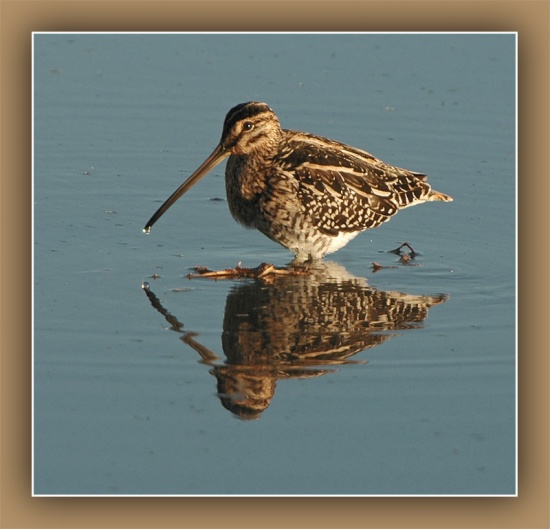Alternative name: Ethiopian Snipe

- Gallinago nigripennis
Identification
30-32 cm
- Brown upperparts, head and neck, streaked and patterned with bold dark brown stripes.
- Gold edges to the feathers form 'braces' down the back
- White belly, though there is some brown barring on the flanks
- Long pinkish-brown bill
- Yellowish-olive to greenish-grey legs and feet
Sexes similar
Immatures have pale fringes on the wing coverts
Distribution
Locally in highlands of eastern and southern Africa.
Western Africa: Democratic Republic of Congo, Angola
Eastern Africa: Sudan, Eritrea, Ethiopia, Somalia, Kenya, Uganda, Rwanda, Burundi, Tanzania, Zambia, Mozambique, Malawi
Southern Africa: Namibia, Botswana, Zimbabwe, South Africa, KwaZulu-Natal, Lesotho, eSwatini
Taxonomy
Subspecies1
- G. n. aequatorialis - Ethiopia to eastern Zaire, Tanzania, Malawi and Mozambique
- G. n. angolensis - Angola and Namibia to Zambia and western Zimbabwe
- G. n. nigripennis - Southern Mozambique and South Africa
Habitat
Wet mountain moorland and swamps.
Behaviour
Breeding
It builds a saucer-shaped nest of dry grass in the drier areas of marshes, concealed in a dense tuft of grass or rushes.
Diet
It forages by pushing its long bill deep into the mud seeking insects and worms.
References
- Clements, James F. 2007. The Clements Checklist of Birds of the World. 6th ed., with updates to October 2007. Ithaca: Cornell University Press. ISBN 9780801445019#Avibase
- Wikipedia
Recommended Citation
- BirdForum Opus contributors. (2025) African Snipe. In: BirdForum, the forum for wild birds and birding. Retrieved 11 May 2025 from https://www.birdforum.net/opus/African_Snipe
External Links
GSearch checked for 2020 platform.



